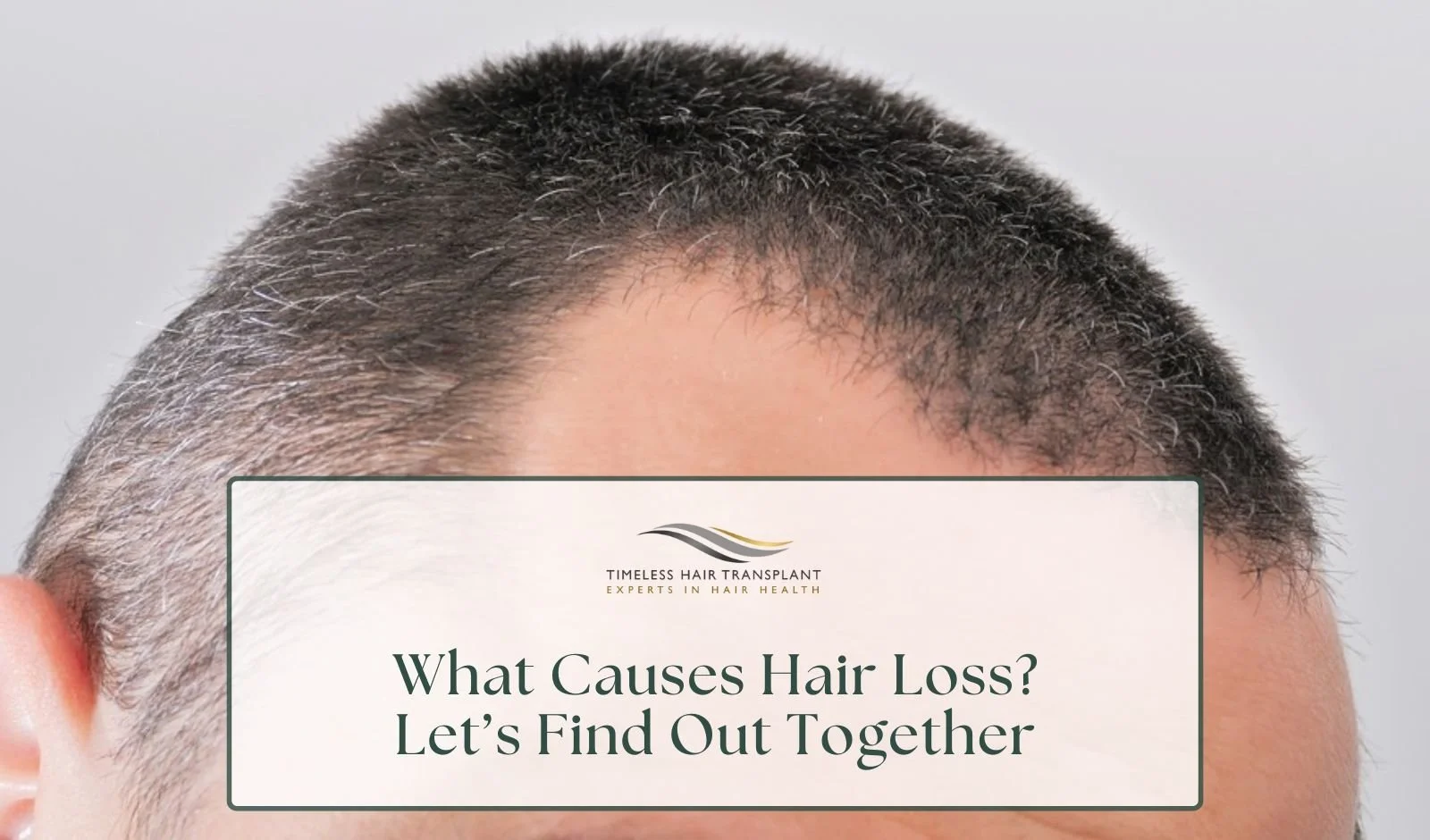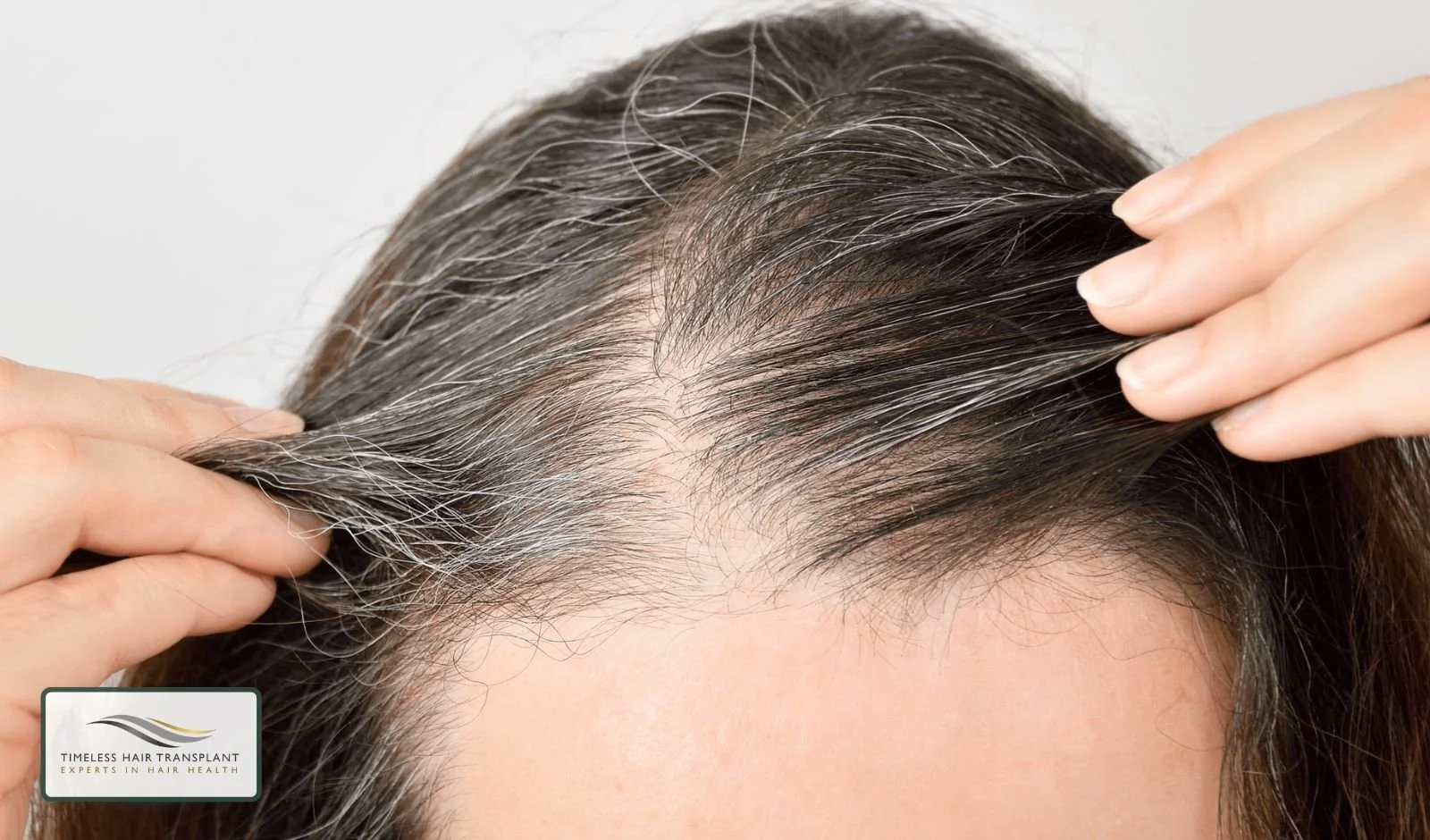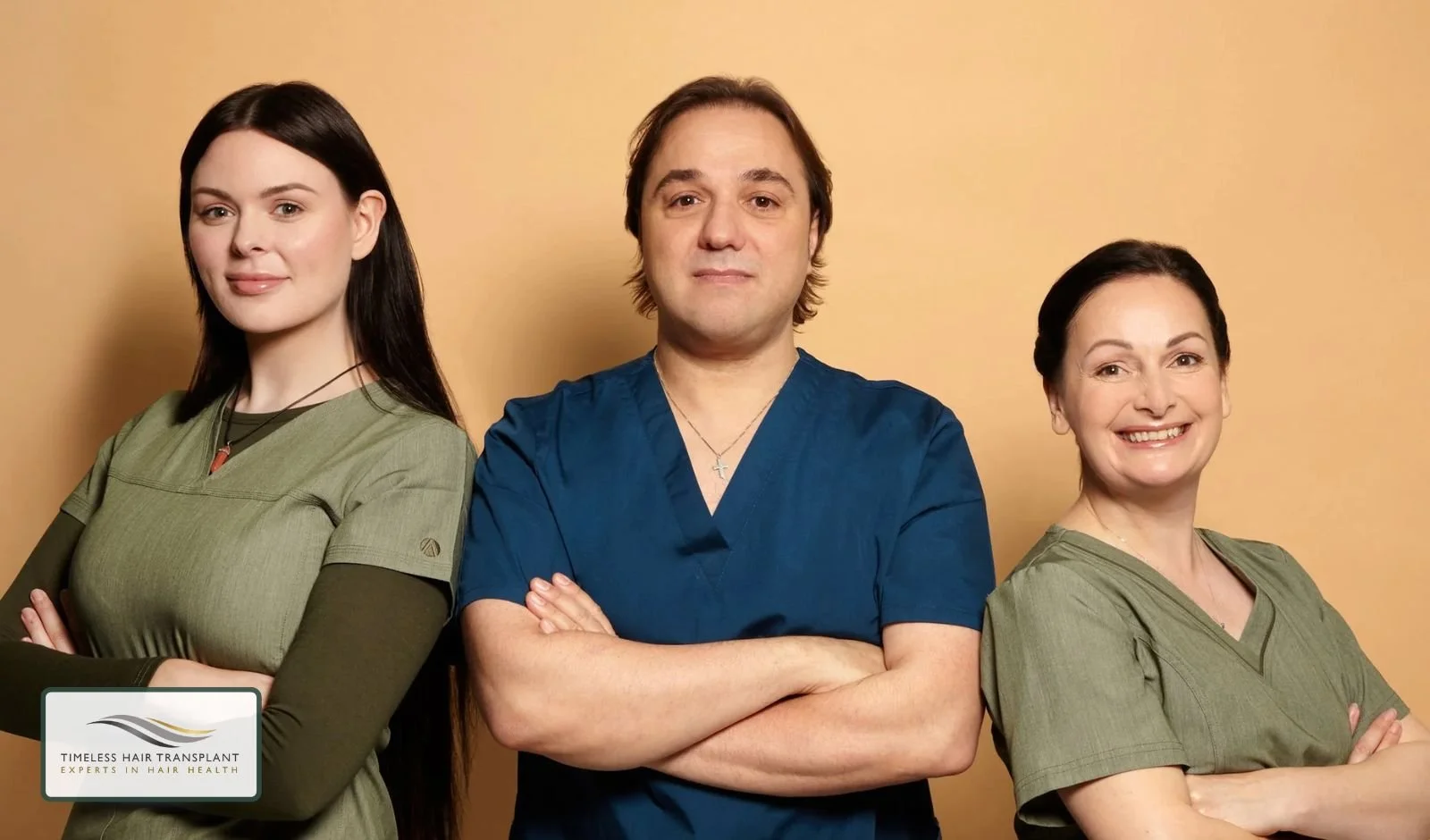What Causes Hair Loss? | Timeless Hair Transplant
Hair loss can happen to anyone, and when it does, it can be worrying. Whether you’ve started noticing more hair on your brush, thinning patches, or even a bald spot, it’s natural to wonder why it’s happening and what you can do about it.
Hair loss affects both men and women and can appear gradually or suddenly, depending on the underlying cause. Sometimes it’s temporary, caused by stress, hormonal changes, or lifestyle factors, while in other cases, it can be genetic or linked to medical conditions. Whatever the reason, understanding what’s happening beneath the surface is the first step toward restoring your hair and your confidence.
In this guide, we’ll explore the most common hair loss causes, how to identify which type of hair loss you might be experiencing, and which hair loss treatments can help bring back healthy, fuller hair that lasts.
Understanding Hair Loss and the Hair Growth Cycle
To understand what causes hair loss, it helps to know how the hair growth cycle works. Each strand of hair goes through three main phases, growth, transition, and rest. Normally, we lose hair every day as part of this cycle, but when hair shedding becomes excessive or new hairs don’t replace the ones that fall, thinning begins.
Hair loss can include temporary or permanent types, depending on the underlying cause. Some people experience patchy loss, while others see gradual thinning across the scalp. Recognising the pattern can help determine the right approach for treatment.
Common Causes of Hair Loss
Hair loss can happen for many reasons, from genetics and stress to diet or certain medical conditions. Let’s look at the most common causes of hair loss that doctors and hair specialists see every day.
1. Genetic Hair Loss (Androgenetic Alopecia)
The most common type of hair loss in both men and women is androgenetic alopecia, often referred to as male pattern baldness or female pattern baldness. This hereditary condition occurs when hair follicles become sensitive to DHT (a hormone derived from testosterone), shortening the growth phase and producing finer, weaker hairs over time.
Men’s Hair Loss:
In men, androgenetic alopecia usually begins with a receding hairline or thinning on the top of the head. As it progresses, these areas can expand into more visible bald spots, especially around the crown and temples.
Women’s Hair Loss:
In women, this condition typically appears as diffuse thinning rather than bald patches. Most notice a widening part line or reduced overall volume across the scalp. While complete baldness is rare, the loss of density can make styling and maintaining healthy hair more challenging.
This condition is hereditary and caused by sensitivity to DHT (a hormone derived from testosterone) that shortens the growth phase of follicles, leading to thinner and shorter hairs over time.
2. Stress and Hormonal Imbalance
Yes, stress can cause hair loss. Physical or emotional stress can push hairs into the resting phase, leading to increased shedding a few months later. This is known as telogen effluvium.
Similarly, hormonal changes from pregnancy, menopause, or thyroid problems can interrupt the hair growth cycle, causing temporary thinning. Once the body stabilises, growth often resumes naturally.
3. Nutritional Deficiencies and Poor Hair Health
Healthy hair relies on a balanced diet rich in protein, iron, zinc, and vitamins. Without these, follicles weaken, and hair becomes brittle, leading to breakage or slower regrowth.
Maintaining good hair health means supporting your body from within, eating well, staying hydrated, and avoiding harsh styling practices.
4. Medical Conditions and Treatments
Certain medical conditions such as autoimmune disorders, scalp infections, or thyroid disease can lead to hair loss. Some medications, including those for high blood pressure, depression, or cancer, can also cause hair falls as a side effect.
Always consult your doctor if you notice sudden or severe shedding after starting a new medication.
5. Traction Alopecia and Styling Damage
Traction alopecia is a preventable cause of hair loss that happens when tight hairstyles, like braids, ponytails, or extensions, pull too hard on the scalp. Over time, this constant tension damages follicles, leading to thinning around the receding hairline or temples.
If you suspect traction alopecia, loosen your hairstyles and avoid chemical treatments to give your scalp time to heal.
6. Lifestyle and External Factors
Environmental pollution, smoking, poor scalp hygiene, and frequent heat styling can all contribute to weak, thinning hair. Keeping your scalp clean and avoiding harsh products helps maintain stronger, healthy hair in the long run.
7. Does Creatine Cause Hair Loss?
One of the most searched questions online is whether creatine, a popular workout supplement, causes hair loss.
There’s limited evidence suggesting creatine may raise DHT levels, the hormone linked to male pattern baldness, but research remains inconclusive.
In most cases, creatine alone doesn’t directly cause hair loss. However, if you already have a genetic tendency toward androgenetic alopecia, it could potentially accelerate the process. Consulting a professional helps determine the best solution for your situation.
Can Hair Loss Be Reversed?
The good news is that many causes of hair loss can be managed or even reversed with the right hair loss treatment.
For temporary shedding, improving nutrition, managing stress, and maintaining scalp care may help restore balance. For genetic or advanced cases, medical treatments and hair transplants offer reliable, long-term solutions.
Modern hair restoration methods such as FUE (Follicular Unit Extraction) are minimally invasive and use your own healthy follicles to rebuild thinning or bald areas permanently. The procedure stimulates hair growth naturally and delivers results that blend seamlessly with your existing hair.
When to Seek Professional Help
If you’ve noticed ongoing shedding, thinning at the crown, or widening parts, it’s best to consult a specialist. A professional assessment can identify whether you’re dealing with androgenetic alopecia, traction alopecia, or another condition, and recommend a treatment plan tailored to your needs.
Early action is key. Addressing the problem sooner can help prevent hair from further loss and preserve the strength of your existing hair.
Final Thoughts: Restoring Confidence with Expert Care
Hair loss can feel frustrating, but understanding hair loss causes is the first step to regaining control. With professional guidance, modern hair transplants, and healthy habits, it’s possible to restore both your hair and your confidence.
At Timeless Hair Transplant, every procedure is personally performed by Dr. Luciano Sciacca, combining medical precision with natural artistry to deliver results that look and feel real.
Call +44 (0) 7516294471 or visit Timeless Hair Transplant to schedule your free consultation and explore your personalised options for lasting hair restoration.




